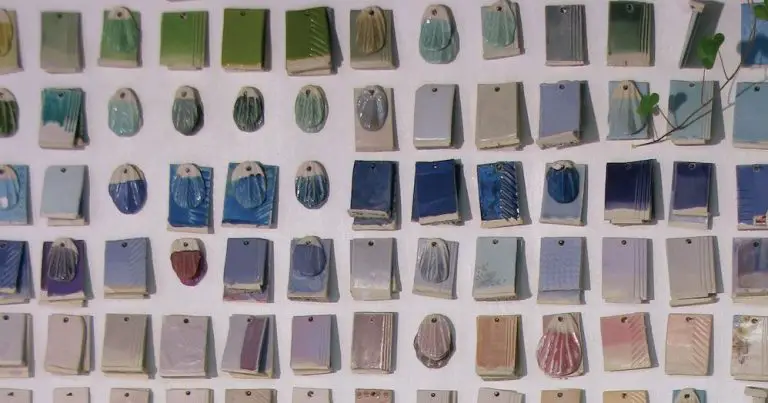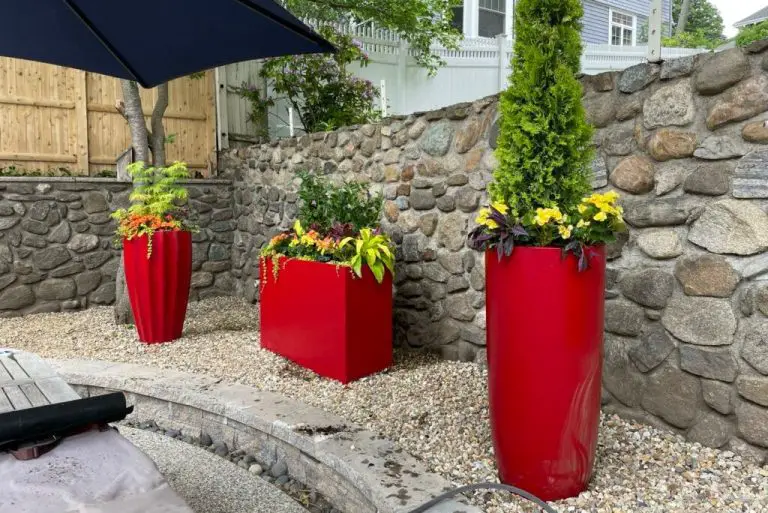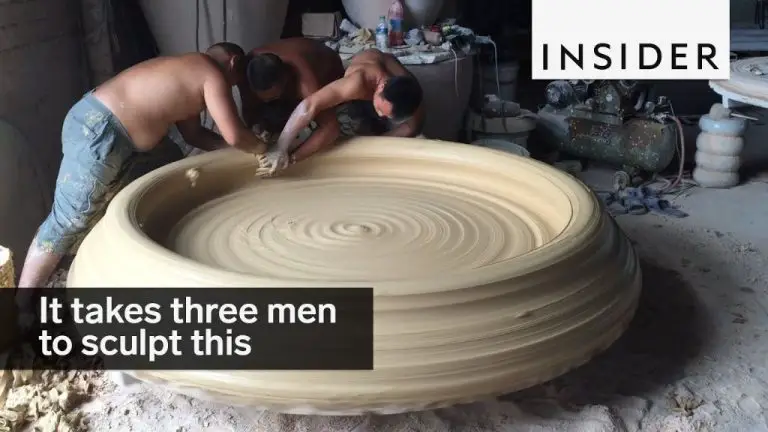What Is The Art Of Making Pots Known As?
Pottery, also known as ceramics, is the art of making functional and decorative objects out of clay by shaping the material while wet and then firing at high temperatures to harden the material. Pottery is one of humankind’s oldest art forms, dating back over 20,000 years, and innovations in ceramic materials and technology have allowed potters to create intricate pieces from cups and bowls to sculpture.
While the terms “pottery” and “ceramics” are often used interchangeably, pottery refers specifically to objects made from clay bodies and intended for utilitarian purposes like cooking, storage, or serving. Ceramics is a broader term encompassing any product made from non-metallic inorganic materials that have been permanently hardened by heating, including pottery as well as porcelain, bone china, stoneware, and terra cotta.
Origins
The origins of pottery date back over 20,000 years ago to the Paleolithic era. Archaeologists have uncovered fired and unfired clay pottery shards dating back to around 20,000 BCE in China and 18,000 BCE in Japan. Other early evidence of pottery has been found in ancient Egypt and Mesopotamia around 6000 BCE.
The earliest known pottery vessels were made in East Asia, with pottery found in Xianrendong Cave in China dating back 20,000-19,000 years ago, and pottery vessels found at Odai Yamamoto in Japan dating back 16,500-14,920 years ago. Pottery may have been independently invented in various places, with early development happening in South America and Sub-Saharan Africa as well.
As early humans transitioned from nomadic hunter-gatherers to settling in permanent locations, pottery emerged as a way to store and transport food as well as for cooking. The development of agriculture around 10,000 BCE further increased the need for pottery vessels for storage and food preparation. From its early functional origins, pottery evolved into a highly skilled art form across many ancient civilizations.
Materials
Clay is the primary material used in pottery. There are several types of clay that are commonly used:
-
Earthenware – This clay contains a high percentage of minerals and melts at lower temperatures. It can be red or brown in color. Earthenware is useful for making tableware and decorative pieces.
-
Stoneware – This clay has fewer minerals than earthenware and becomes watertight and durable after firing. It is commonly grey or brown. Stoneware is frequently used to make pots, mugs, and bowls.
-
Porcelain – The purest form of clay, porcelain has very few impurities. It fires at extremely high temperatures to produce delicate, white pieces. Porcelain is ideal for making tableware and figurines.
In addition to clay, glazes and slips are also used in pottery. Glazes provide a glass-like coating and come in various colors and finishes. Slips are liquid clay solutions that can be used to decorate the pottery before firing.
Methods
There are several main methods used in the art of pottery making:
Handbuilding
Handbuilding involves shaping clay by hand without the use of a potter’s wheel. Some common handbuilding techniques include:
- Pinching – Pinching the clay to pull up walls and shape the form
- Coiling – Rolling out ‘snakes’ of clay and stacking them to build up the piece
- Slab building – Rolling out flat slabs of clay and joining them together
Handbuilding allows for asymmetrical forms and organic shapes not easily made on the wheel. It can also be a more accessible method for beginners.
Wheel Throwing
Wheel throwing involves shaping clay on a rotating potter’s wheel. The centering and raising of the clay on the wheel head allows for symmetrical forms and smooth surfaces. Expert wheel throwing skills allow for thin-walled vessels and intricately shaped pieces.
Molding
Molding involves pressing soft clay into molds made of plaster, wood, or other materials to create standardized shapes. The clay takes on the inverse shape of the mold. Molds allow for consistency and intricate detailing. The molded clay is often cleaned up by hand after being removed from the mold.
Decoration
Ceramic pots can be decorated in a variety of ways to enhance their beauty and appeal. Three of the most common decoration techniques are glazing, painting, and incising.
Glazing involves applying a glass-like coating over the bisqueware pot before firing. The glaze melts during firing and fuses to the clay body to form a durable, decorative surface. Glazes come in endless colors and textures and significantly alter the look and feel of the finished pot. Clear glazes can showcase the natural clay color while colored glazes totally transform the pot’s appearance.
Painting allows more precise decorative control than glazing. Pigments are hand-painted directly onto the dried clay surface before firing. Brushwork can create any design imaginable from simple bands of color to intricate landscapes. Traditionally, mineral-based ceramic stains were used but today acrylic underglaze paints are more common. The painted pot must be covered with a transparent glaze before firing to seal and protect the decoration.
Incising involves cutting designs, patterns or words into the leather-hard clay before drying and firing. Sharp tools are used to carve fine lines and textures into the pot’s surface. The decoration is emphasized when colored slips or glazes pool inside the incised lines. Incising allows for refined designs not easily achieved with painting alone.
Firing
Firing is the process of exposing pottery to high temperatures in a kiln to permanently harden the clay. Historically, potters used open bonfires, trenches, and primitive kilns to fire their wares. Today, there are several types of kilns used for firing pottery:
Kilns
The most common types of kilns are:
- Electric kilns – These kilns use electricity to generate heat and allow precise control over temperatures.
- Gas kilns – Fueled by propane or natural gas, these kilns can reach high temperatures quickly.
- Wood-fired kilns – Firing pottery with wood fuel gives unique smoky effects.
Firing Temperatures
Clay must be fired at high enough temperatures long enough to fully vitrify or solidify the clay into ceramic material. Typical firing ranges are:
- Low-fire – From 1600°F to 1800°F, low-fire glazes mature faster and brighter.
- Mid-range – Around 2100°F, many stoneware clays fire successfully at this range.
- High-fire – From 2200°F to 2400°F, high-fire clays result in stronger and more durable ceramics.
The final characteristics of the pottery depend greatly on the kiln type, firing temperature, and firing duration.
Forms
Pottery takes various shapes and forms and can serve a variety of purposes. The most common forms of pottery include:
Vessels
Vessels refer to pottery created in the form of containers, such as vases, jugs, bowls, bottles, cups, and pots. Vessels are hollow and can be used to store or transport liquids, foods, and other materials. Potters craft vessels in different sizes and shapes for different uses.
Sculpture
Pottery can also be sculptural in nature, where the focus is on the visual and artistic aspects rather than function. Sculptural pieces may be decorative, abstract, figurative, or conceptual. They allow potters to push creative boundaries and express their artistic vision.
Functional
Many types of pottery are functional, meaning they serve practical everyday purposes. Functional pottery includes tableware like plates, dishes, and mugs as well as kitchenware such as casserole dishes, pitchers, and canisters. The forms follow the intended uses.
Notable Styles
Pottery has been created in vast multitudes of styles and forms throughout history. Some of the most notable styles include:
Ancient Greek Pottery
Potters in ancient Greece are renowned for their iconic black-figure and red-figure pottery. Black-figure pottery involved painting figures and decoration in black pigment on a red clay ground. Red-figure pottery was the opposite, with figures being left in the red clay and details painted on in black. Both styles depicted elaborate scenes from Greek mythology and daily life.
Tang Dynasty Pottery
Chinese potters during the Tang Dynasty gained great acclaim for their elegant green-glazed wares. The thin, delicate ceramics were decorated with stylized figures, patterns, and landscapes painted in cobalt blue pigment. The Tang pottery style was imitated for centuries after in China and had a major influence across East Asia.
Italian Renaissance Maiolica
Italy became a center of ceramic production during the Renaissance. Maiolica ware refers to tin-glazed earthenware popular at this time, often brightly painted with historical and biblical scenes. Centers like Florence, Faenza, and Deruta created fine maiolica pieces that were widely exported.
Delftware
Delftware originated in the Netherlands as a cheaper alternative to Chinese porcelain. It involved covering earthenware with an opaque white glaze and hand-painting decorative designs in blue. Delftware became popular across Europe in the 17th-18th centuries for its attractive tableware and ornamental pieces.
Contemporary Potters
Modern day potters draw inspiration from traditional styles and methods while also embracing new technologies and creative directions. Here are some of the most prominent contemporary potters actively working today:
Jen Mecca is an American potter based in Baltimore, Maryland. She is known for her vivid colored crystalline glazes and intricate sgraffito carvings. Mecca experiments with unusual surface textures and firing techniques to create one-of-a-kind pieces.
Japanese potter Takuro Kuwata skillfully combines wheel-throwing and hand-building to produce organically shaped porcelain vessels. His intricately patterned ceramics feature bold colors and innovative shapes inspired by natural forms.
Magdalene Odundo is a Kenyan-British potter renowned for her sleek, oblong vessels with undulating rippled surfaces. She uses coiling techniques without a wheel to craft beautiful handbuilt ceramic sculptures.
Alice Ballard of the United Kingdom makes nature-inspired pottery with etched botanical motifs. Her delicate porcelain pieces are admired for their pale hues and finely detailed surface markings.
Other noteworthy contemporary potters shaping the field today include Clary Illian, Jennifer McCurdy, Yeesookyung, Grayson Perry, Edmund de Waal, and Lisa Hammond.
Conclusion
To conclude, the art of making pots is a highly skilled craft known as pottery or ceramics that has been practiced for thousands of years across many cultures. Pottery serves both artistic and practical functions – pots can be sculptures or vessels, decorative or functional. The materials and methods involved in creating pottery are quite complex, requiring knowledge of clay composition, hand building or wheel throwing techniques, methods of decoration, and firing processes. While pottery was once crucial for storage and serving food, today it remains an important tradition kept alive by artisans and ceramic artists. The legacy of pottery is evident in the many styles that emerged across history, from ancient Greek Amphorae to delicate Chinese porcelain. As an enduring and universally beloved art form, pottery will continue to evolve with contemporary practitioners pushing the boundaries of what clay can be.



